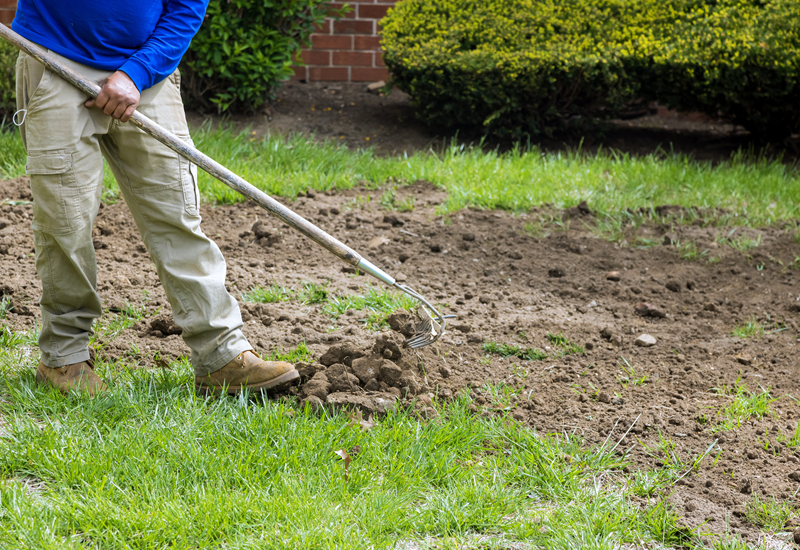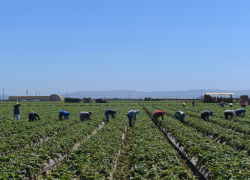
January is Human Trafficking Prevention Month, a month when we turn special attention to raising awareness about human trafficking, but every day the Department of Labor is working to combat labor exploitation and human trafficking.
Human trafficking is a crime involving the exploitation of someone to compel their labor or a commercial sex act through force, fraud or coercion. If anyone under 18 is induced to perform a commercial sex act, it is a crime regardless of whether there is force, fraud or coercion.
In 2021, the department helped expose a trafficking case where more than 100 workers from Mexico, Guatemala and Honduras were fraudulently brought to the U.S. through the H-2A agricultural work visa program. They were coerced into performing physically demanding work in Georgia, Florida and Texas, including being required to dig onions with their bare hands. Workers toiled for little or no pay – in some cases just 20 cents for each bucket harvested. Traffickers threatened the workers or their families with violence and deportation, forced the workers to pay illegal fees, and held them in cramped, unsanitary work camps.
Traffickers exploit a worker’s vulnerabilities. Although anyone can be subjected to forced labor, some groups are at heightened risk, including foreign workers on temporary visas, people experiencing poverty and economic hardship, and undocumented workers, among others.
These examples also illustrate many of the signs of trafficking: poor living conditions, debt owed to an employer or recruiter, a worker feeling pressure to stay in a work situation that they would like to leave, and more.
The Department of Labor, through our work to enforce federal labor laws such as minimum wage, overtime and workplace safety laws, is often the first law enforcement agency on a worksite and in a unique position to detect and refer instances of potential human trafficking.
Staff in the department’s Wage and Hour Division and the Occupational Safety and Health Administration are trained to look for indicators of trafficking and make referrals to other agencies. The Wage and Hour Division also calculates restitution for victims of trafficking when requested by the Department of Justice. The Department of Labor’s enforcement work is also a critical tool in addressing labor abuses and exploitation before the situation deteriorates into labor trafficking.
The Wage and Hour Division and OSHA also have tools to aid workers and strengthen our enforcement work, including completing U and T visa certifications for workers who have been victims of certain crimes, including trafficking.
In September, Acting Labor Secretary Julie Su and the Department of Labor inducted into the Hall of Honor a group of Thai garment workers who helped expose their former employers’ abusive labor practices by building their power and exercising their rights. Their efforts and case ultimately helped spur the creation of the U and T visas.
Through the Employment and Training Administration, the department also helps survivors of trafficking access economic opportunities and reenter the workforce through individualized career services. The administration also plays an important role in preventing human trafficking in the temporary foreign worker programs through the foreign labor certification process, which is designed to ensure the admission of temporary foreign workers does not harm the opportunities, wages, and working conditions of U.S. workers. And the Monitor Advocate System supports migrant and seasonal agricultural workers, an industry where trafficking occurs at higher rates, including through outreach and a complaint system.
Internationally, the Bureau of International Labor Affairs researches and provides funding and technical assistance to address forced labor and child labor around the world. The bureau’s work highlights how human trafficking exists in nearly every country and across our supply chains, from palm oil plantations in Malaysia and Indonesia, to call centers in Thailand and Taiwan, to growing climate-related trafficking. In September, for the release of their annual flagship report on child labor in 131 countries and territories, the bureau hosted an event focused on lessons from global child labor enforcement.
Across the federal government, agencies are collaborating and strengthening our collective work to combat human trafficking as part of the National Action Plan to Combat Human Trafficking.
Every day, the Department of Labor is working to ensure that the economy is built from the middle out and the bottom up, but central to building high road jobs is combating the low road. When we work to prevent and combat human trafficking, we build a fairer economy and help make workplaces better for everyone, everywhere.
Trudy Rebert is a policy advisor in the Office of the Assistant Secretary for Policy.

 U.S. Department of Labor Blog
U.S. Department of Labor Blog
